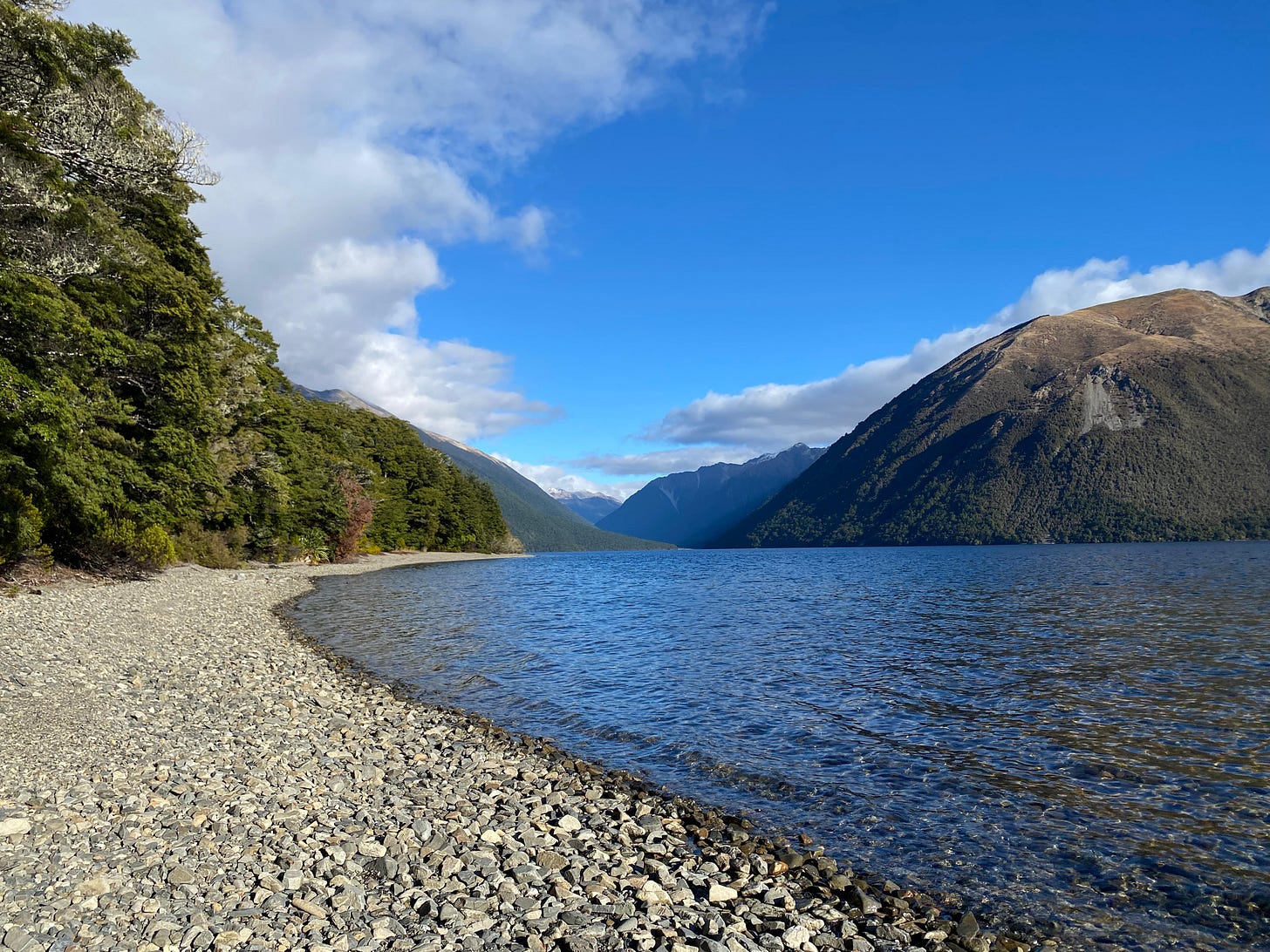Winter Mushroom Hunting at Lake Rotoiti
A week of winter foraying in New Zealand’s beech forests uncovers an underground world. From truffle-like fungi once eaten by moa to purple pouches and rare pink fans along the shores of Lake Rotoiti.
Winter cold just hits different in New Zealand. It’s not only the temperature, but the combo of wet air and wind chill cuts right to the bone. And it's even worse when you’re under canopy cover, in the shade, and still damp from the rain.
But the thrill of uncovering mushrooms makes it all worth it. Something about spotting those bursts of color in the forest gives me a second wind, and a bit of adrenaline keeps me going.
When the sun’s out, it’s manageable. But daylight hours are short, and the sun usually dips around 5 pm, so timing matters. I spent the past week based at Kerr Bay in St. Arnaud, just beside Lake Rotoiti. It’s an ideal winter spot for mushroom hunters.
If you’re looking for purple mushrooms like Cortinarius sp. (Purple Pouch Fungus) or Gallacea scleroderma (Velvet Potato Fungus), this is where you want to be. Both are striking and were the most prolific during the trip.
Over the week, I must have found more than a hundred.
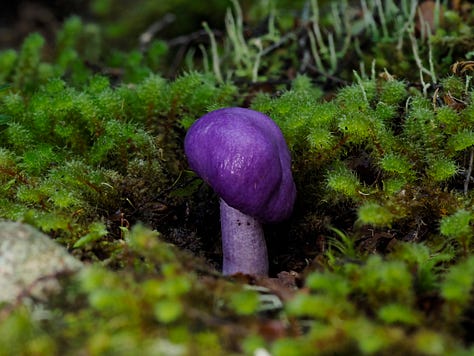

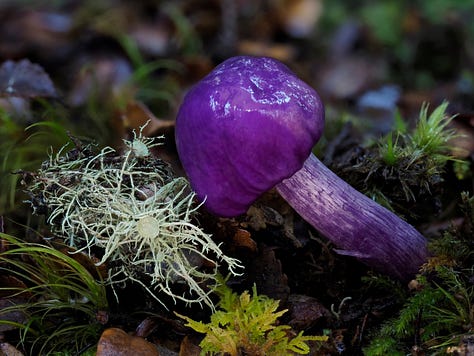
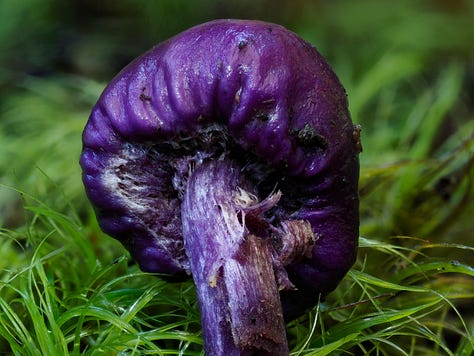
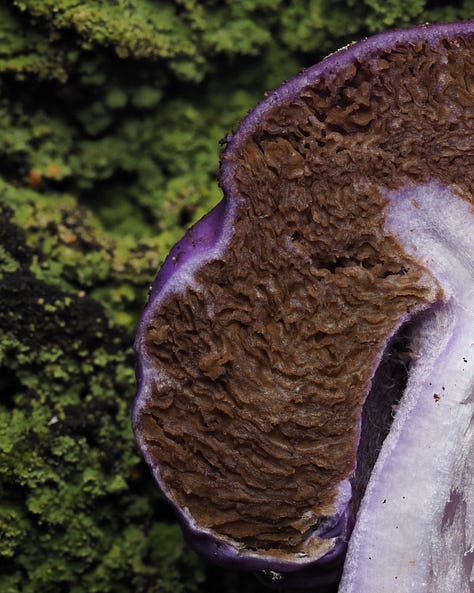
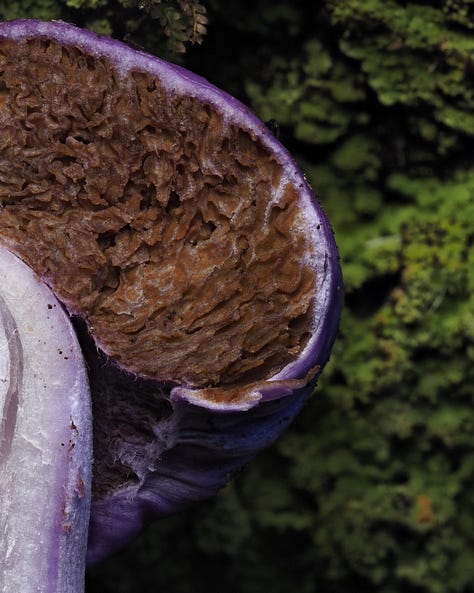
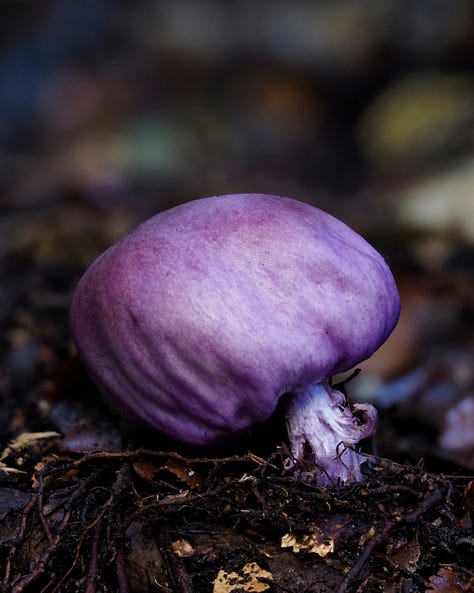
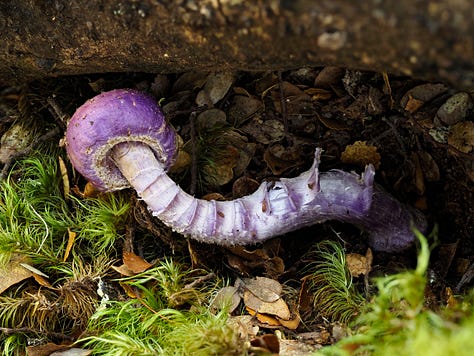

But the real standout was Gallacea scleroderma, a truffle-like fungus that grows underground in partnership with native beech trees (Nothofagus). This one has some deep history behind it.
Its spores have been found in fossilised moa droppings, revealing that these giant, now-extinct birds once feasted on the colorful fungi and helped spread their spores across the forest floor, likely mistaking them for berries. Kind of like how cassowaries in Australia are drawn to purple berries.
The Velvet Potatoes were impossible to miss. I stumbled on a whole hillside dotted with them, more than I could fit into a single shot.
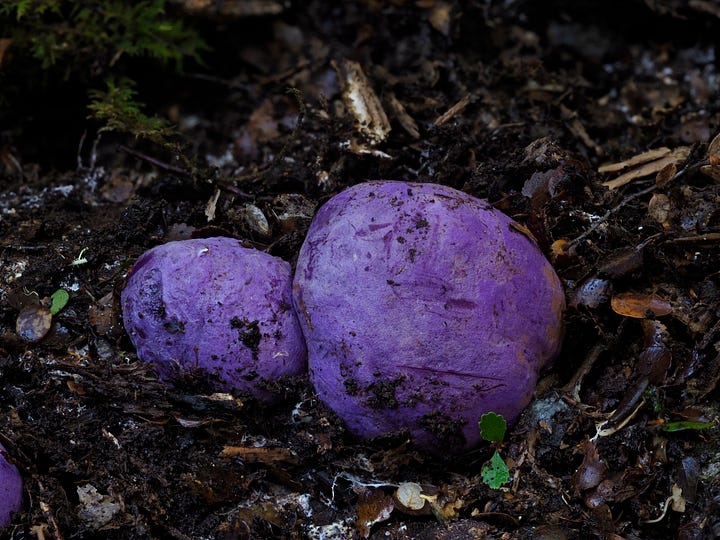
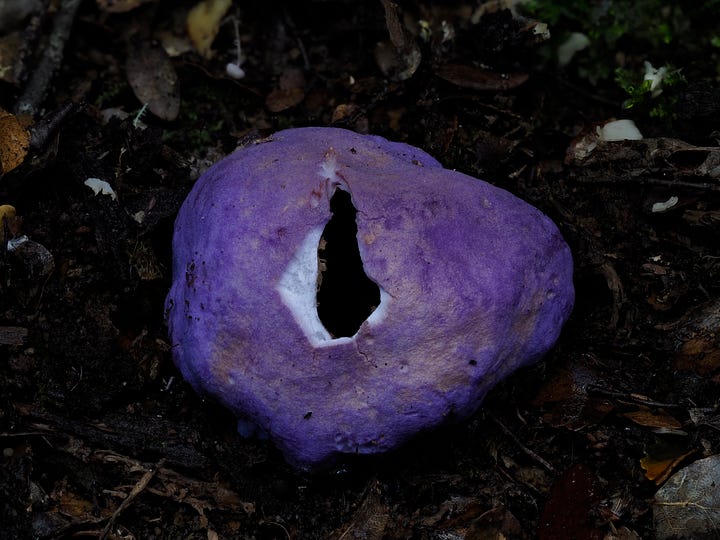
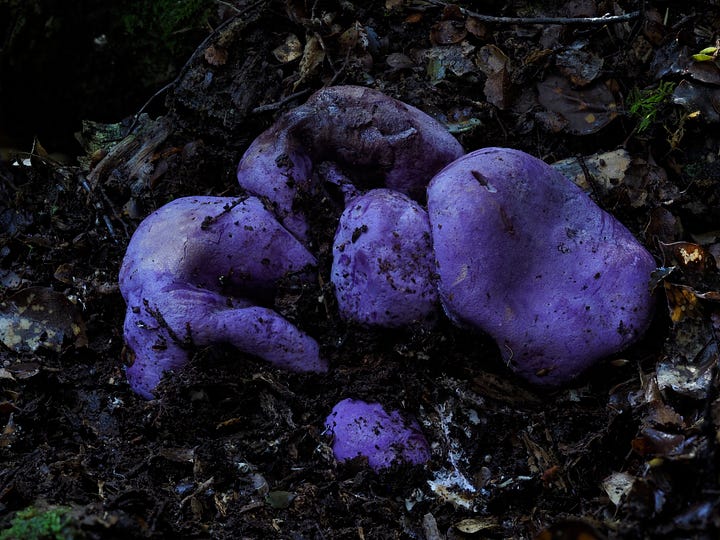
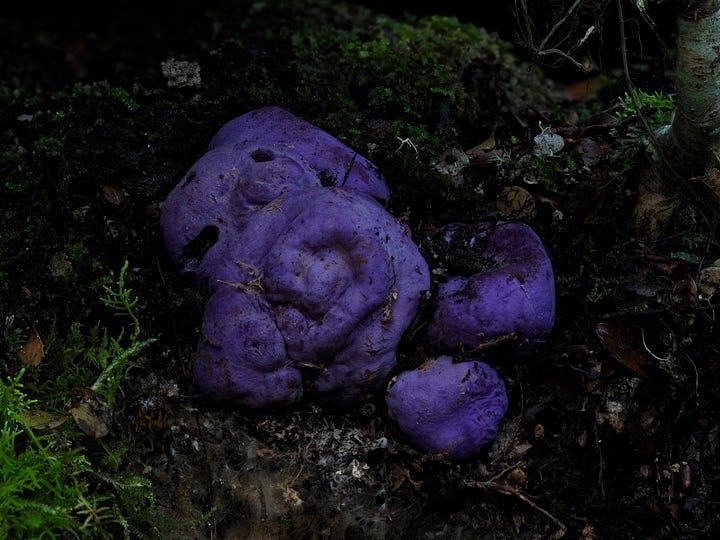
Inside each one is the gleba, a spore-bearing mass where insects crawl in to lay their eggs. As the larvae hatch and feed, they help distribute the spores. Not quite the moa, but a decent effort on nature’s part.

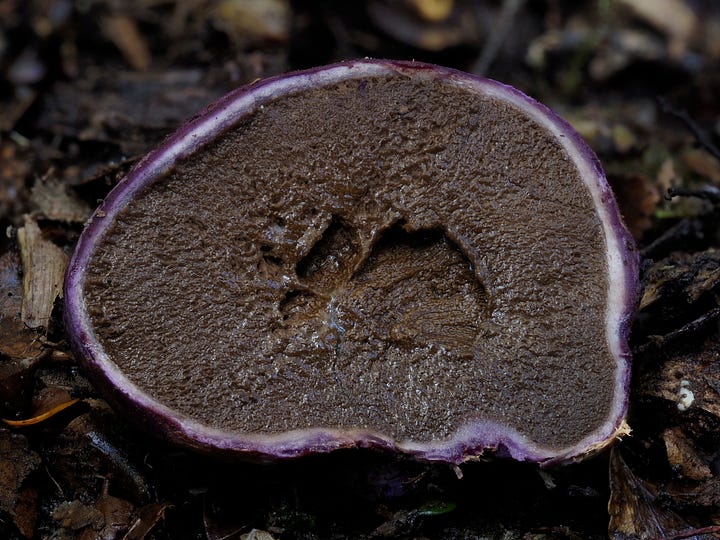
Most of my finds were along the Honeydew Track, a short loop walk by the Kerr Bay campsite. It was full of life. But one day I crossed to the far side of the lake, past the jetty where eels hang out, and black swans, ducks, and pied cormorants rest on the rocky shore.
I followed the Peninsula Track and lucked out with a rare bright pink, fan-shaped fungus. At first it looked like a Crepidotus, but turned out to be Cheimonophyllum roseum.
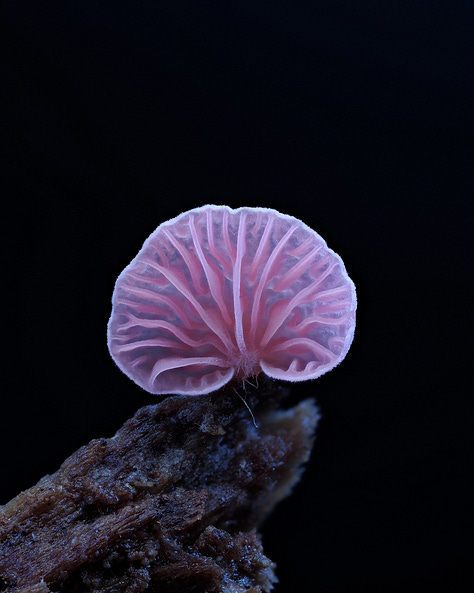
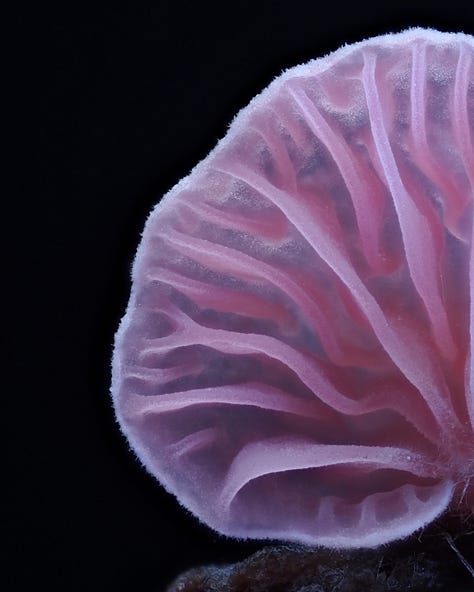
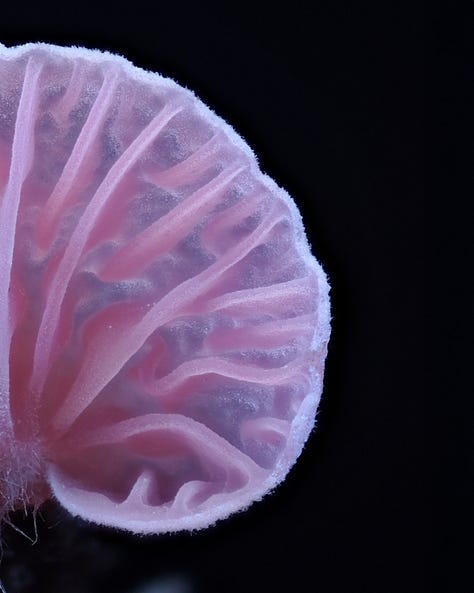
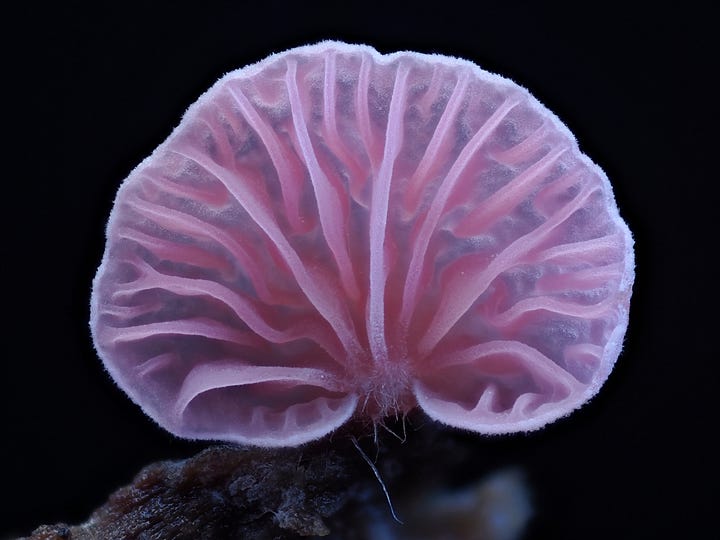
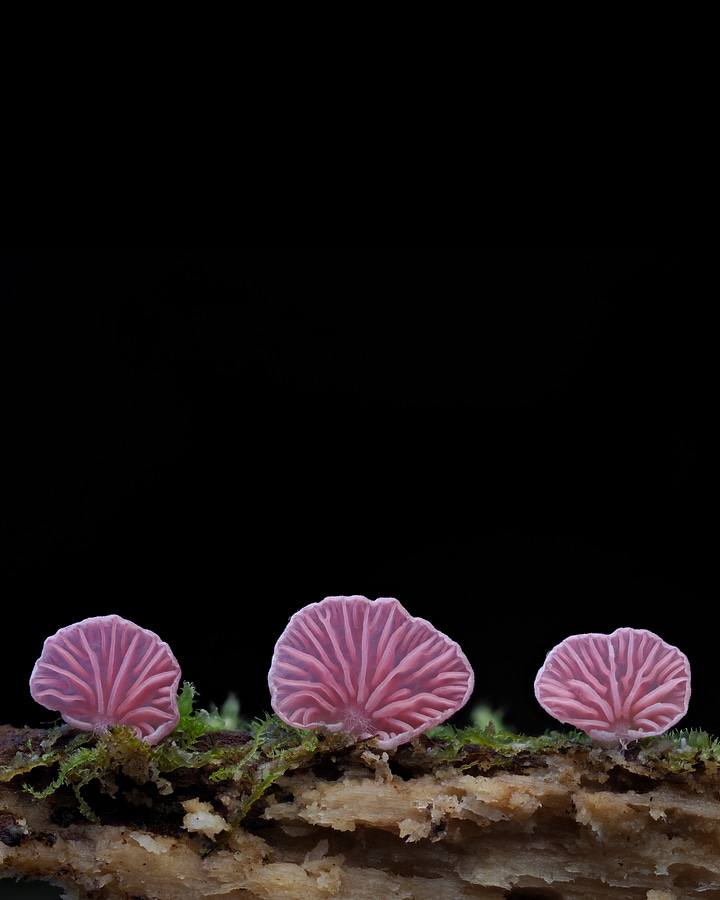
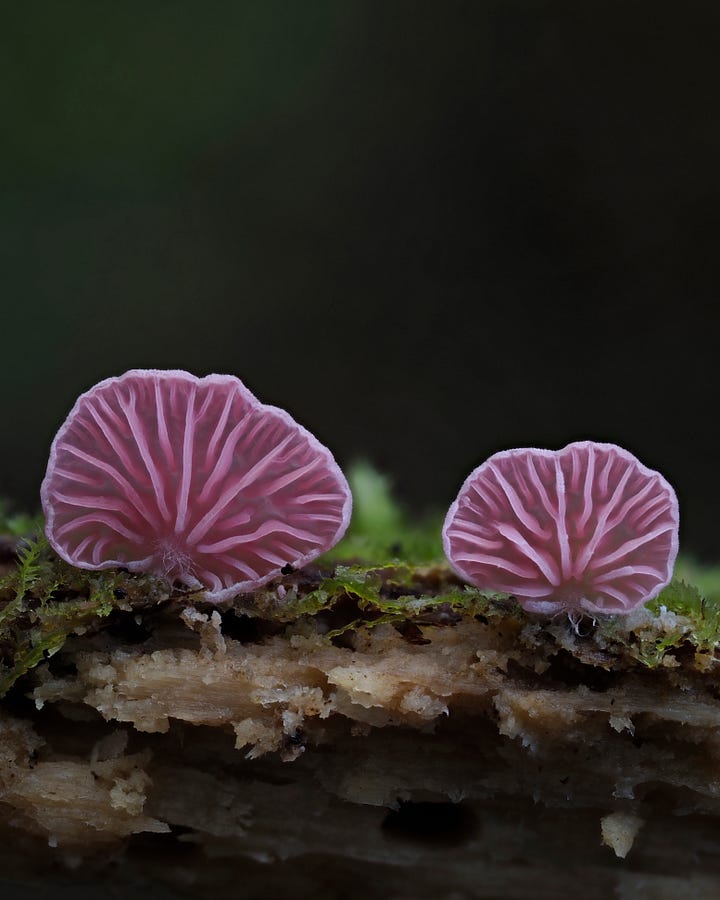
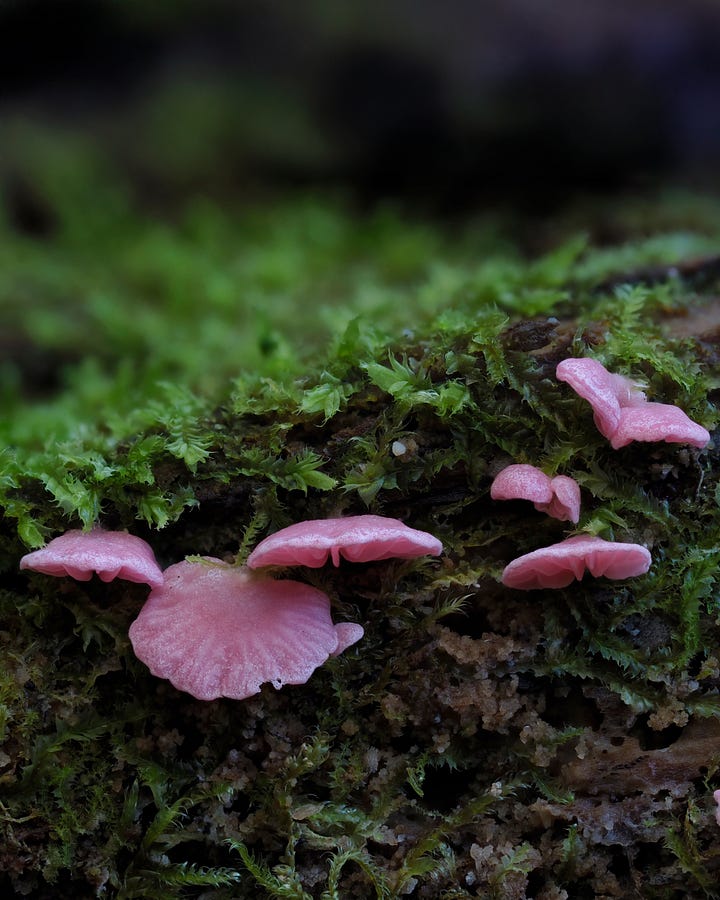
It’s only been recorded on iNaturalist four times, two of which were by my friends in Malaysia. Funny how small the world feels when you're out here looking at mushrooms.
Other truffle-like fungi that popped up were the white-to-blue turning Rossbeevera pachydermis. I photographed about another 16 species, ranging from the size of a pinhead to trees covered in native oyster mushrooms, to other brightly colored species.
Keep reading with a 7-day free trial
Subscribe to Myconeer to keep reading this post and get 7 days of free access to the full post archives.



